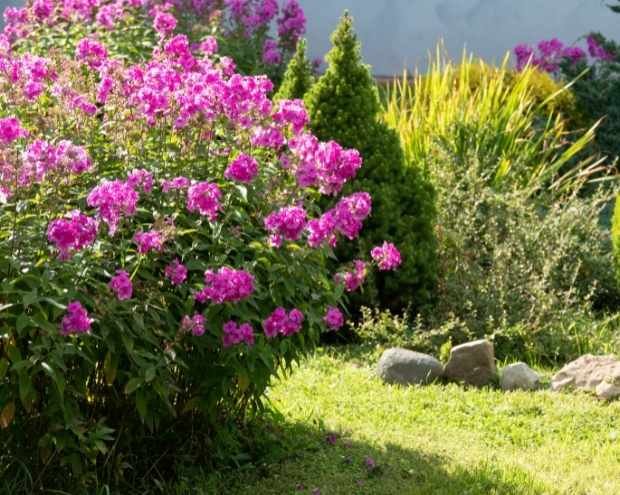Do Gardens Need Shade? 6 DIY Options For Overly Sunny Gardens
Just a heads up, this post contains some affiliate links. That means that we earn a small commission if you buy the product at no extra cost to you. That allows us to continue to research and share interesting articles with you. :)
This year has seen one of the sunniest years on record. The UK has had a huge drought and hit 40C (104F) for the first time in living memory.
While the idea of hanging out on a sunny beach sounds rather blissful on a drizzly day, it’s not been all sunshine and rose (sorry for the pun) in the garden. Many UK gardeners have been struggling with the unseasonably warm weather and wall-to-wall sunshine.
When it comes to gardens, the question of whether or gardens need shade is a complex one, but on the whole, gardens do need some shady spots, and there are plenty of vegetable plants that prefer the shade to bright sunshine.
There are a variety of factors that must be considered in order to answer this question definitively. For example, the type of plants that are being grown in the garden must be taken into account.
Some plants thrive in direct sunlight, while others require more shade in order to prosper. Additionally, the climate in which the garden is located must be considered.
Let’s take a deeper look at what you can do to maximise your shady spots in the garden as well as the sunny spots.
The Sun: Too Much Of A Good Thing
Although the sun is essential for life, too much of it can be detrimental, especially to sun-loving plants in the garden.
Vegetable plants such as beans, cucumber, sweetcorn and of course tomatoes (yes, we know they’re a fruit!) thrive in sunny conditions but can suffer from heat stress if they are overexposed to the sun’s rays.
Symptoms of heat stress in plants include wilting, leaves that are dry or crispy, and flowers that droop or fade.
Shade-loving plants like swiss chard, beetroot, radishes and even carrots don’t do very well in bright sunshine at all and would do well to have some protection from hot direct sunlight.
To protect your sun-loving plants from heat stress, provide them with ample water and shelter from the midday sun. If possible, choose a spot in the garden that receives morning sun and afternoon shade.
Mulching around the base of the plant will also help to keep the roots cool and moist. With proper care, your sun-loving plants will thrive all summer long.
Why Gardens Need Shade
When it’s hot outside, the last thing you want to do is stand in the sun. The same goes for your garden. While a little bit of sun is essential for photosynthesis, too much sun can be harmful to your plants. That’s why gardens need shade.
Shade helps to protect your plants from the harsh rays of the sun. Too much sun can cause leaves to scorch and wilt. It can also dry out the soil, making it difficult for plants to absorb water and nutrients. Shade also provides a respite from the heat, so your plants won’t have to work as hard to stay cool.
In addition to protecting your plants from the sun, shade also provides a home for beneficial insects like ladybirds and bees. These insects help pollinate your flowers and keep pests at bay.
Shade Options For Sunny Gardens
In the hot summer months, our gardens can become unbearably sunny and heated. Gardens need shade just as much as they need sun, and there are plenty of ways to create it.
Here are a few ways to create some shade in your garden to help all plants thrive in the conditions that they like the best.
1. Trees and Shrubs

One way to create DIY shade in your garden is to plant tall trees or shrubs along the perimeter. This will provide a natural barrier from the sun and help keep your garden cooler.
Trees are the best way to provide shade in the garden. They can grow tall and provide deep, cool shade all summer long.
Deciduous trees lose their leaves in the winter, so they won’t block out the sun when you need it most. Some good trees for providing shade in the garden include maples, oaks, and elms.
Shrubs can also provide some shading in the garden, though they won’t be as effective as trees. Shrubs that have dense foliage are good choices for creating smaller shady areas in the garden.
2. Build a Pergola or Shade Structure

Another way to add shade is to build a pergola or arbour. These structures can be covered with vines or fabric to provide even more protection from the sun.
Don’t forget about portable options like umbrellas and canopies. These can be moved around as needed to provide shade where you need it most.
If you have a sunny spot in your garden that you’d like to turn into a shady retreat, consider using a pergola or canopy. These structures can provide much-needed relief from the hot sun, and they’re relatively easy to build yourself.
Here are a few things to keep in mind if you’re thinking about adding a pergola or canopy to your garden:
- Make sure you have enough space – A pergola or canopy needs some room to breathe, so be sure to leave at least 2 feet of space on all sides.
- Choose the right materials – For a pergola, look for weather-resistant wood like cedar or redwood. Canopies can also be made from a variety of materials, including fabric, metal, or even PVC pipe.
- Plan for drainage – If you plan to use a pergola, remember that water can collect on the roof. To prevent problems, install gutters under the overhang to catch any runoff and direct it away from your home. You can even turn this into a rainwater collection system!
- Choose your location carefully – If you live in a hot and humid climate, think twice before building a pergola or canopy over your patio. That extra shade can keep the roof from ever drying out, which can lead to mould and rot.
- Consider The Permanence – When building your pergola or similar, build it so that the shade cover can be rolled out like an awning, this gives you maximum flexibility all year round.
3. Use A Trellis

Gardens need shade, we know that, but does it always have to be an ugly option? Absolutely not!
A trellis can be placed on the north or east side of the garden, where it will protect plants from the hot afternoon sun.
If you have a small garden, you can make a mini-trellis by attaching lattice panels to posts.
If you’re not in the mood for doing some DIY, you can buy pre-made garden trellises at your local garden centre or online.
You can also use plants to create a trellis. Things that grow vertically, like beans and peas, are great for this purpose.
4. Create A Windbreak

A windbreak can be a helpful addition to any garden, providing shade and protection from the wind.
There are many different ways to create a windbreak, such as using trees, shrubs, or even man-made structures.
The most important thing to remember when creating a windbreak is to make sure that it does not block out all of the sunlight. Gardens need some sun exposure in order to grow properly.
By using a windbreak in the vegetable garden, gardeners can create an area that is cooler and more protected from the elements. This can be especially helpful during the hot summer months.
5. Plant Some Perennials

Perennials are a great way to create living shady areas in your vegetable garden, and they don’t need too much maintenance either.
Perennials are plants that live for more than one year. This means that they will come back each year, without having to be replanted.
Many perennials have deep roots, which help to hold the soil in place and prevent erosion.
Perennials can be used in a number of ways to create shady areas in the garden, for example:
- They can be planted under trees, or along fences.
- They can also be used to create living walls or privacy screens.
Perennials are a low-maintenance way to add beauty and interest to the garden and a great way to section your garden.
6. Using A Shade Cloth

A shade cloth (sometimes called a shade canopy) can provide protection from the sun for your vegetables, help keep the soil moist by reducing evaporation., and it’s easy to make a DIY shady area.
To create a DIY shady area, simply drape a piece of cloth over your plants. You can use a clothesline or rope to secure the cloth to posts or other support structures. Make sure the cloth is loose enough so that air can circulate, but tight enough so that it doesn’t blow away in the wind.
The best types of fabric to use are fairly loose-weaved and light-coloured. Muslin, hessian (burlap), and cotton open weave are great choices as well as the obvious horticultural fleece.
If you’re feeling extra creative, you can build a frame out of wood and sew a cover that has the ability to be taken on or off with velcro. For real DIY enthusiasts, this wooden frame can double up as a cold frame during the winter with removable panels!

One of the most important things to remember though is not to allow the shade cloth to touch your plants!
Back To The Good Life is a participant in the Amazon Services LLC Associates Program, an affiliate advertising program designed to provide a means for sites to earn advertising fees by advertising and linking to Amazon.com. We also participate in other affiliate programs which compensate us for referring traffic.






